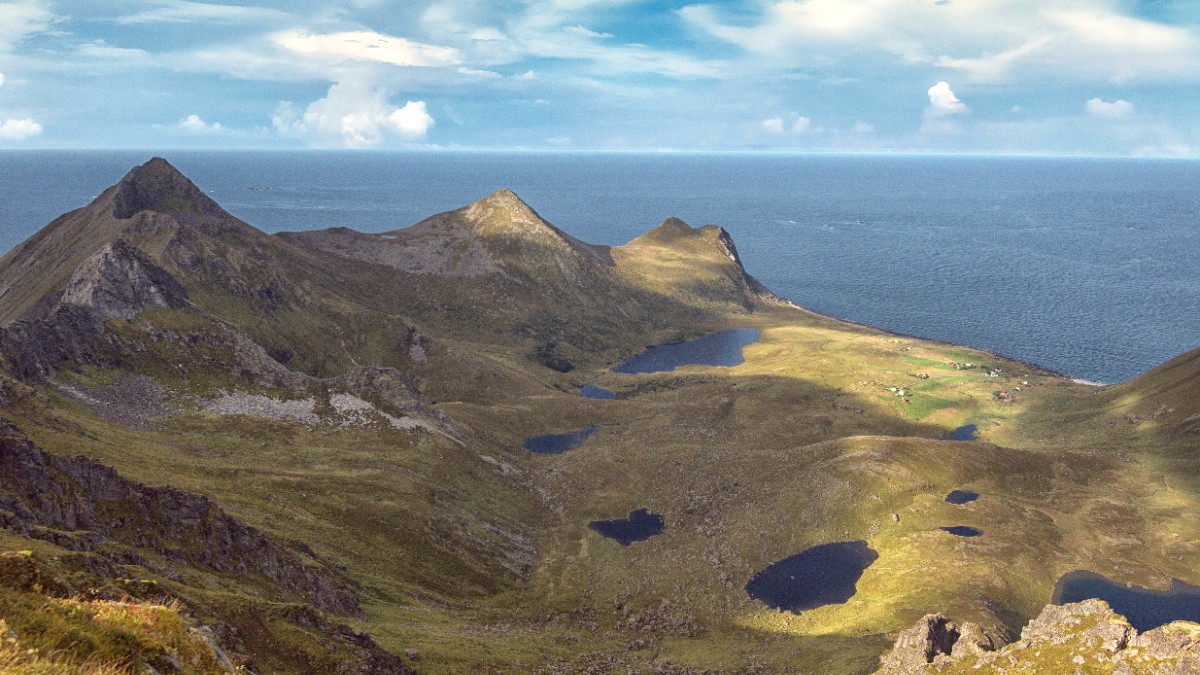
Stanley, the capital, features several landmarks that embody the islands' history and character.
Must-visit sites with historical and cultural context.
Exploring the coastline near Stanley can reveal peaceful vistas.
A small art gallery or craft shop may be present in Stanley, showing local artwork, photography, and crafts. These often combine with souvenir sales.
The Falkland Islands Community School occasionally hosts public events or performances. The Town Hall in Stanley is also used for community gatherings, local plays, or musical performances. Check local listings for any events.
The Historic Dockyard Museum occasionally hosts temporary exhibits that focus on specific aspects of island history or culture. Inquire at the museum or visitor center about current programming.
Beyond the iconic landmarks, the Falklands offer a dive into their past through various historical sites.
Limited archaeological sites. Remains of old shipwrecks visible in Stanley harbor and coastal locations, serving as poignant reminders of maritime past.
Christ Church Cathedral is the main religious landmark. Small, simple churches also exist in some Camp settlements, serving as community hubs.
Remains of whaling industry (rusting machinery) visible in some remote locations. Military heritage significant with sites from WWI naval Battle of Falklands (1914) and 1982 conflict. Military presence at Mount Pleasant Complex.
Stanley features distinctive Victorian-era architecture, specifically along Ross Road. Many houses have corrugated iron roofs and brightly painted exteriors, an unique visual charm. Walking tours of Stanley highlight these features.
Numerous memorials across the islands relate to the 1982 conflict. These include the Liberation Monument in Stanley, the British Cemetery at Blue Beach, and various regimental memorials on battlefield sites. Older memorials commemorate maritime disasters or significant historical events. Respect these sites as places of remembrance.
Each site tells a story of the islands' enduring past and resilience, offering a connection to the Falkland Islands.
No large national parks in the traditional sense, but vast areas are important for conservation. The Government House garden in Stanley is a famous, well-maintained green space.
Numerous stunning coastal landscapes, with rugged cliffs, white sandy beaches (e.g., Gypsy Cove, Surf Bay), and vast, open plains in the Camp. Rugged hills, like Mount Usborne, offer panoramic views. Stone runs (periglacial features) are unique geological formations.
This is the main natural attraction. The Falklands are a haven for seabirds and marine mammals. Sites include Volunteer Point, Sea Lion Island, Pebble Island, Saunders Island, Carcass Island, and Gypsy Cove/Yorke Bay.
The Falklands are world-renowned for their abundant wildlife. Use binoculars for observation.
The Falkland Islands are world-renowned for their natural beauty and abundant wildlife, which draw many visitors.
This is the main natural attraction. The Falklands are a haven for seabirds and marine mammals.
These encounters usually occur via guided tours or independently if staying at a lodge near a wildlife site.
The islands feature numerous scenic coastal landscapes and unique geological formations.
The Falklands have numerous natural water features.
The Falklands feature unparalleled photo opportunities.
Capture the vast scale of the treeless landscape under dramatic skies.
Close-up wildlife portraits (from a respectful distance) against natural backdrops.
Historical relics, like old military vehicles or shipwrecks, set against rugged natural scenery.
Secure your entry to attractions and tours in advance.
Explore tickets on GetYourGuideFor insights and safe access to remote areas like battlefields.
Find guided tours on GetYourGuideArrange FIGAS flights for inter-island travel.
Search transport options on Booking.comConsider lodges that feature direct access to wildlife viewing areas.
Discover wildlife lodges on AgodaFamiliarize yourself with sites like Saunders Island, Carcass Island, and Gypsy Cove for specific wildlife sightings.
Research locations on Booking.comContinuing the list of premier wildlife spots on the islands.
Maintain a respectful distance from wildlife to avoid disturbance.
Bring binoculars for wildlife viewing.
They aid observation of animals at a respectful distance without disturbing them.
Beyond well-known attractions, the Falklands feature opportunities for more secluded discoveries.
Explore quieter, authentic island experiences.
Discover spots cherished by locals and new areas opening to visitors.
The Falklands feature unparalleled photo opportunities.
From panoramic vistas to intimate details, the islands await your lens.
Capture stunning close-up wildlife portraits.
Ensure minimal disturbance to the animals while photographing.
Document the islands' rich history through its tangible remnants.
Each photograph tells a story of the past and present.
Most outdoor sites are open access, but it is highly recommended to visit battlefield sites with a local guide for safety and context.
Stanley can be busiest on cruise ship days; check the schedule. Early mornings or late afternoons offer ideal light for photography.
Always stick to marked paths, especially near former minefields. Be mindful of rapidly changing weather conditions.